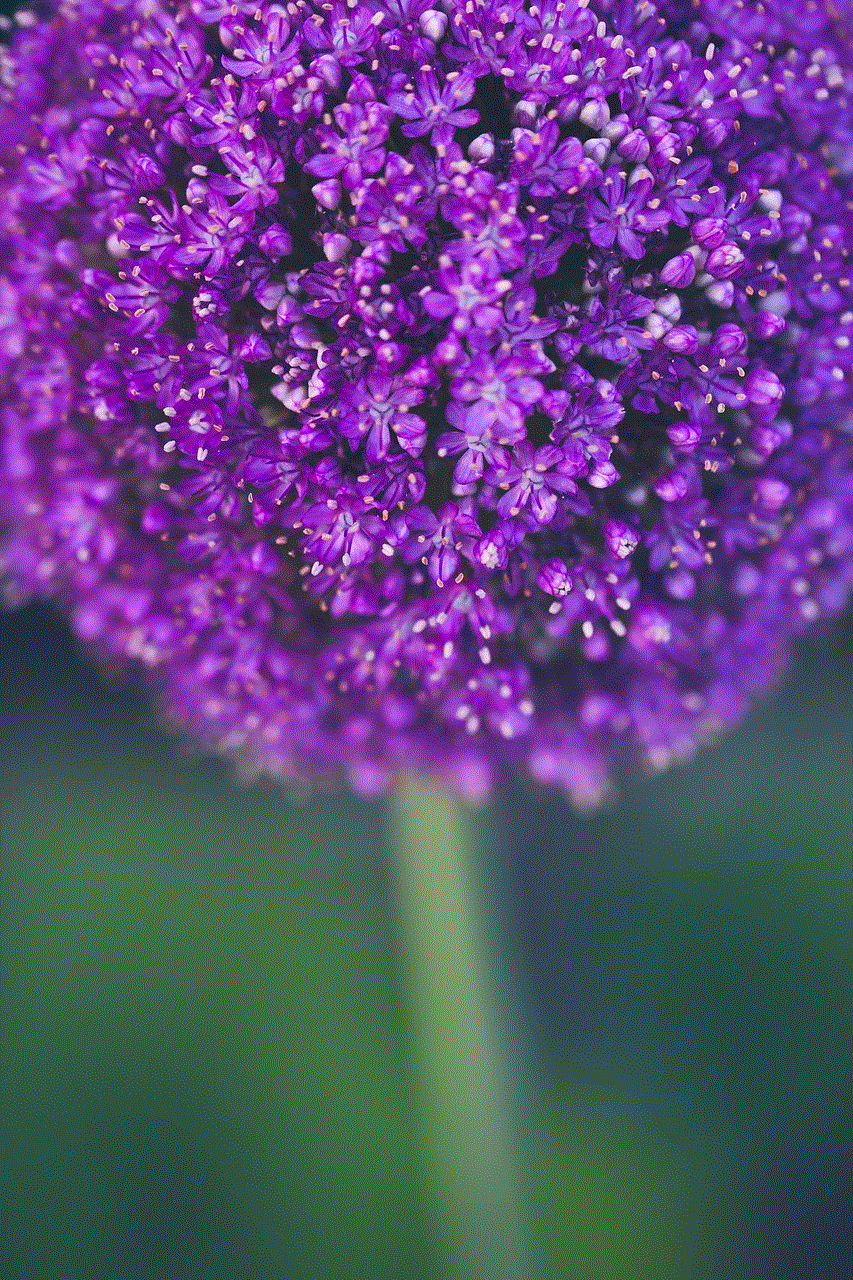how to view private browsing history safari iphone
Private browsing has become a popular feature among internet users, especially on smartphones like the iPhone. It allows users to browse the internet without leaving any trace of their browsing history, cookies, or temporary files on the device. This feature is particularly useful for those who share their devices with others or for those who don’t want their browsing history to be saved. However, there may be instances when you need to access your private browsing history on Safari on your iPhone. In this article, we will discuss how to view private browsing history on Safari on an iPhone.
Before we dive into the steps to view private browsing history on Safari, let’s understand what private browsing is and how it works. Private browsing, also known as incognito mode, is a feature that allows users to browse the internet without leaving any trace of their online activities. This means that the websites you visit, cookies, and temporary files will not be saved on your device. Private browsing is not a foolproof method to keep your online activities private, as your internet service provider and the websites you visit can still track your browsing history. However, it is an effective way to keep your browsing history private from other users of your device.
Now, let’s get into the steps to view private browsing history on Safari on an iPhone. Please note that these steps may vary slightly depending on the version of iOS and Safari on your device.
Step 1: Open Safari on your iPhone and tap on the Tabs icon at the bottom right corner of the screen. This will bring up all the currently open tabs on Safari.
Step 2: Tap on the “Private” option at the bottom left corner of the screen. This will bring up all the tabs that were opened in private browsing mode.
Step 3: To view the history of a specific tab, tap and hold on the tab, and then select “Show History” from the options that appear. This will show you all the websites visited in that particular private browsing tab.
Step 4: If you want to view the entire private browsing history, tap on the “History” icon at the bottom right corner of the screen. This will show you the browsing history for all the private tabs that were open.
Step 5: You can also access the private browsing history by tapping on the “Bookmarks” icon at the bottom of the screen and then selecting “History” from the options that appear.
Step 6: If you want to clear your private browsing history, you can do so by tapping on the “Clear” button at the bottom left corner of the screen. This will give you the option to clear the history of the past hour, today, today and yesterday, or all time.
Step 7: If you have synced your Safari browsing history with other devices, you can also view your private browsing history on those devices by signing in with the same Apple ID.
Step 8: Another way to access your private browsing history is through the Settings app on your iPhone. Open the Settings app, scroll down and tap on “Safari”, and then select “Advanced”. Under the “Website Data” section, you will find a list of all the websites that have been stored on your device. This includes the websites visited in private browsing mode as well.
Step 9: You can also use third-party apps to view your private browsing history on Safari. There are several apps available on the App Store that claim to be able to retrieve private browsing data. However, it is essential to be cautious when using such apps as they may not be completely reliable or secure.
Step 10: It is worth noting that private browsing is not foolproof, and there are ways to access private browsing history even after it has been cleared. Therefore, it is always advisable to use other methods to keep your online activities private, such as using a virtual private network (VPN) or clearing your browsing history regularly.
In conclusion, private browsing is a handy feature to have on your iPhone, and it allows you to browse the internet without leaving any trace of your online activities. However, if you need to access your private browsing history on Safari, you can do so by following the simple steps mentioned above. Remember to use this feature wisely and always take additional measures to keep your online activities private.
what does j mean
The letter “J” is the tenth letter in the modern English alphabet. It has a unique shape, with a long, straight line extending down to the baseline and a shorter line curving to the right at the top. It is a letter that has fascinated people for centuries, and it has a rich history and meaning behind it.
The origins of the letter “J” can be traced back to the Semitic letter “yodh,” which was used in the Phoenician and Hebrew alphabets. It had a similar shape to the modern “J,” but it was used to represent the sound of “Y” instead. The Greeks adopted this letter and changed its shape to a “J” to represent the “I” sound. The Romans then borrowed this letter from the Greeks and used it in their own alphabet, calling it “I” and using it to represent both the “I” and “J” sounds.
It wasn’t until the 16th century that the letter “J” became its own distinct letter. The Italian humanist and philologist, Gian Giorgio Trissino, is credited with creating the letter “J” by adding a tail to the letter “I” to distinguish it from the letter “I.” This new letter then spread to other languages, including English, where it eventually became the tenth letter of the alphabet.
The letter “J” is also associated with the number ten, as it is the tenth letter of the alphabet. In ancient numerology, the number ten represents completion and perfection, making the letter “J” a significant and powerful symbol. This association with the number ten is also seen in the Tarot, where the tenth card is the Wheel of Fortune, representing the cycles of life and the completion of a stage.
The letter “J” also holds significance in many cultures and religions. In Christianity, the letter “J” is associated with Jesus, as his name is often written as “J.C” or “J.C.” In Judaism, the letter “J” is used to represent the name of God, as it is considered too sacred to write in full. In many Native American cultures, the letter “J” is associated with the Thunderbird, a powerful and mythical bird that represents strength, protection, and transformation.
In the world of music, the letter “J” has been used in various ways. In classical music, it is used to represent the note B in the German musical notation system. In jazz music, the letter “J” is often used to represent the chord progression for a minor seventh chord. And in popular music, there have been many songs with “J” in their titles, such as “Jolene” by Dolly Parton and “Johnny B. Goode” by Chuck Berry.
The letter “J” also has a strong presence in literature. In the English language, there are many words that start with the letter “J” that are commonly used in poetry, such as “joy,” “journey,” and “jubilee.” It is also used in many literary works as a symbol or metaphor, such as in F. Scott Fitzgerald’s “The Great Gatsby,” where the letter “J” represents the elusive and unattainable American Dream.



In the world of sports, the letter “J” has been used to represent many teams and players. In the National Football League, the Jacksonville Jaguars, the New York Jets, and the Kansas City Chiefs all have “J” in their team names. In basketball, the iconic Michael Jordan, often referred to as “MJ,” has become synonymous with the letter “J.” And in baseball, the New York Yankees, one of the most famous and successful teams in the sport, have the letter “J” as their logo.
The letter “J” has also been used in many company and brand names. One of the most well-known is J.C. Penney, a department store chain founded in 1902. Other popular brands with “J” in their names include Jeep, Johnson & Johnson, and Jaguar. In the world of fashion, designers such as Calvin Klein, Jimmy Choo, and J. Crew all have “J” in their names, adding a touch of elegance and sophistication to their brands.
In the digital age, the letter “J” has also taken on new meanings and uses. In the world of computing, “J” is often used as a variable name in programming languages, such as Java and JavaScript. It is also commonly used in email and online messaging to abbreviate “just,” as in “I’m jk” (just kidding). And in social media, the hashtag #justdoit has become synonymous with Nike’s iconic slogan, adding a modern twist to the use of the letter “J.”
In conclusion, the letter “J” has a rich and diverse history, with various meanings and uses across different cultures and industries. It is a letter that has stood the test of time, evolving and adapting to new languages and technologies. Whether it represents completion, perfection, power, or elegance, the letter “J” continues to captivate and fascinate people all over the world. It is a testament to the power of language and its ability to connect us all.
how to be an emo
Emo, short for emotional, is a subculture that emerged in the early 2000s, particularly in the alternative rock and punk music scene. It is characterized by its unique fashion, music, and lifestyle. Emos are often stereotyped as being sad, depressed, and overly emotional, but in reality, being emo is much more than just a fashion statement or a phase. It is a way of expressing one’s feelings and standing out from the mainstream society. In this article, we will delve deeper into the world of emos and explore how one can embrace this subculture and become an emo.
Understanding the Emo Culture
The emo culture is a blend of punk rock, indie, and gothic influences. It is not just a fashion trend but a lifestyle that revolves around emotional expression and self-identity. The origins of emo can be traced back to the 1980s with the emergence of bands like Rites of Spring and Embrace. However, it gained mainstream popularity in the early 2000s with bands like My Chemical Romance, Fall Out Boy, and Panic! at the Disco.
Emo fashion is a key aspect of the culture, and it is often characterized by dark, tight-fitting clothes, dyed hair, and heavy eye makeup. Black is the predominant color in emo fashion, but it is not limited to it. Emos often mix and match different styles, such as punk and gothic, to create their unique look. Apart from clothing, accessories like studded belts, band pins, and wristbands are also an essential part of the emo style.
Emo Music
Music plays a significant role in the emo subculture. Emo music is a fusion of punk rock and alternative rock with lyrics that focus on personal experiences, emotions, and social issues. The music is often described as raw, emotional, and intense, which resonates with many emos. Some of the most popular emo bands include My Chemical Romance, Dashboard Confessional, and Taking Back Sunday.
To fully embrace the emo culture, it is crucial to explore and appreciate different emo bands and their music. Attend concerts, listen to their albums, and immerse yourself in the lyrics. Emo music is not just about sad and melancholic songs, but it also celebrates self-expression and individuality.
Embracing Emotional Expression
As the name suggests, being emo is all about being emotional. Emos are not afraid to express their feelings, whether it is happiness, sadness, anger, or frustration. They often use creative outlets like music, writing, or art to channel their emotions. Emos are also known for their vulnerability and authenticity, which sets them apart from the mainstream society.



To be an emo, it is essential to embrace your emotions and express them in healthy ways. Find an outlet that allows you to express yourself, whether it is through music, writing, or art. Embrace vulnerability and authenticity, and don’t be afraid to talk about your feelings and experiences with others. Emo culture celebrates individuality and encourages people to be true to themselves.
Building a Community
One of the most significant aspects of the emo culture is the sense of community and belonging. Emos often form tight-knit groups and support each other through the ups and downs of life. This community provides a safe space for emos to be themselves without the fear of judgment or ridicule.
To be an emo, it is crucial to find like-minded individuals and build a community. Attend local emo music events, join online forums and groups, and participate in meetups. Building a community not only allows you to connect with others but also helps you to learn more about the emo culture and embrace it fully.
Emo Lifestyle
Apart from fashion and music, the emo lifestyle also includes certain attitudes and values. Emos are known for their anti-establishment beliefs and their rejection of mainstream culture. They often challenge societal norms and question authority. Emos also value creativity, individuality, and self-expression.
To be an emo, it is essential to embrace these attitudes and values. Question societal norms and find your own path. Embrace creativity and express yourself in unique ways. Rejecting mainstream culture does not mean isolating yourself from society, but rather finding your place in it without compromising your values and beliefs.
Emo and Mental Health
Emo culture is often associated with mental health issues, particularly depression and self-harm. While it is true that many emos struggle with these issues, it is crucial to understand that being emo is not the cause of these problems. Emos use self-expression as a way to cope with their feelings and emotions, and it can be therapeutic for them.
If you are struggling with mental health issues, it is essential to seek professional help. Emo culture promotes emotional expression, but it is not a substitute for therapy or medication. Remember to take care of your mental health and seek help when needed.
Dealing with Stereotypes
Being an emo often comes with many stereotypes and misconceptions. Emos are often labeled as attention-seekers, depressed, and even suicidal. These stereotypes are not only hurtful but also untrue. Emos, like any other subculture, are diverse and cannot be defined by these stereotypes.
If you decide to embrace the emo culture, it is crucial to be prepared to deal with these stereotypes. Remember that you do not owe anyone an explanation for who you are and what you like. Embrace your individuality and be proud of it.
Conclusion



In conclusion, being an emo is more than just a phase or a fashion trend. It is a subculture that celebrates emotional expression, individuality, and creativity. To be an emo, it is essential to embrace the culture, understand its origins and values, and find a community that supports and accepts you. Remember to take care of your mental health and don’t let stereotypes define you. Embrace your emotions, express yourself, and be true to who you are.